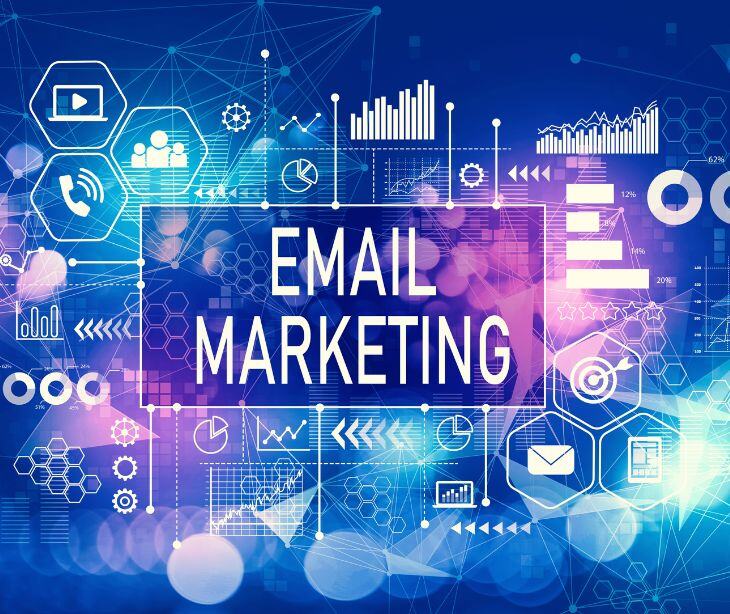5 min read
How to improve staff response rates in healthcare practices
Kirsten Peremore
April 23, 2024

Quick and reliable responses to emails can impact customer satisfaction and trust. By focusing on staff cooperation, organizations can create a culture that promotes both individual performance and the collective efficiency of the team. This leads to smoother operations, better management of tasks, and ultimately, a more successful organization.
The benefits of improving response rates
- Faster email responses can help triage patient concerns more effectively.
- Improved response times facilitate quicker referrals between departments, such as from a general practitioner to a specialist.
- Quick email replies enable more efficient scheduling of appointments, tests, and surgeries.
- Timely email communication ensures that follow-up care instructions and patient queries are addressed swiftly.
- Faster response rates can help ensure that healthcare providers are more compliant with standards and regulations that require timely documentation and follow-ups on patient care.
- Quick email responses facilitate better collaboration on research projects and clinical trials by speeding up exchanges between researchers and clinicians.
- In times of a healthcare crisis, such as a disease outbreak or natural disaster, quick email communications help coordinate care and disseminate public health information rapidly.
- By improving email efficiency, administrative staff can manage their workload better.
- Quick responses can expedite the resolution of queries related to insurance and billing.
The role of surveys as a starting point to a response rate campaign
A survey is a tool used to ask healthcare employees about their email habits, the challenges they encounter, and their suggestions for improvement. The purpose of this survey is to gather information that can help develop strategies to make email communication more efficient within the healthcare practice.
A Health Technology Assessment study discussing the process of creating staff surveys in healthcare stated the following on the topic of the purpose of these surveys, “The principal objective should always be to collect reliable, valid and unbiased data from a representative sample, in a timely manner and within given resource constraints.”
Launching a campaign to announce this survey helps make sure that all staff members are aware of the survey and are motivated to participate. This campaign helps relate how the survey's results will lead to better email practices.
Survey champions are enthusiastic and influential employees within the healthcare practice who promote the survey in their departments. They act as advocates, explaining the benefits of the survey and encouraging their colleagues to participate.
To identify survey champions in each department, the practice can look for employees who are proactive, have a positive impact on their peers, and are actively engaged in improving the workplace. These champions can be identified through recommendations from department heads or by recognizing employees who have shown interest and initiative in past projects.
See also: How to send HIPAA compliant surveys
How to create an effective survey
- Keep it concise: Surveys should be short and to the point. Long surveys can lead to respondent fatigue, which might result in incomplete responses or participants dropping out before finishing. Aim for a survey that can be completed in 5-10 minutes.
- Use simple language: Avoid technical jargon and complex vocabulary unless it is necessary and the audience is familiar with it. Simple and direct questions are more likely to be understood and answered accurately.
- Mix question types: Use a variety of question types such as multiple choice, Likert scales, and open-ended questions. This mix can keep the survey engaging and provide both quantitative data and qualitative insights.
- Avoid leading or biased questions: Makes sure that the questions are neutral and do not lead the respondent to a particular answer. Biased questions can skew the results and compromise the integrity of the data.
- Pilot the survey: Before rolling out the survey to the entire target audience, conduct a pilot test with a small, representative group. This can help identify any confusing questions or technical issues with the survey format.
- Ensure anonymity and confidentiality: If the survey involves sensitive information, reassure respondents that their answers will remain anonymous and confidential. This can increase the honesty of the responses.
Incentive vs competition methods to improve response times
A 2021 study offered the following perspective on incentive and competition based methods amongst healthcare staff, “Different researchers have examined motivational incentive and reward systems for employees. Some researchers believe that these incentives are the reason employees feel energetic and motivated toward their work. However, some researchers have also focused on the effect that a positive environment has on employees. If organizations provide them with this environment, then employees help them in achieving their goals.”
Incentive-based methods reward healthcare staff for promptly responding to emails. For example, employees might receive bonuses, gift cards, or additional leave days if they consistently answer emails within a certain timeframe. This method directly motivates individuals by rewarding their quick responses, which can be particularly effective in a high-stress environment where every minute counts.
Competition-based methods, on the other hand, introduce a friendly rivalry among staff members. By using leaderboards or announcing monthly "fastest responder" awards, healthcare facilities can cultivate a competitive atmosphere that encourages staff to respond quickly and engage in a team-oriented challenge. This can be especially effective in a collaborative environment like healthcare, where teamwork is necessary.
Both approaches aim to improve the promptness of email communication, which allows for the smooth functioning of healthcare services. While incentives focus on individual rewards, competition-based methods leverage group dynamics and the natural human drive for recognition and success.
Best practices for email communication
Alongside the use of HIPAA compliant email services like Paubox, the use of additional practices can contribute to improving the response rate:
- Consider the recipient’s time zone: When sending emails, always take into account the recipient's time zone. This practice ensures that your emails are sent during the recipient's working hours, increasing the likelihood of a prompt response. Tools like scheduling features in email clients can help send your email at an optimal time for the recipient.
- Use work email and personalize with name and title: Always use the recipient’s work email for professional communications, as this is more likely to be regularly checked and kept organized than personal emails. Start the email by addressing the recipient by their name, and if appropriate, include their professional title. This not only shows respect but also personalizes the email, making it more likely to receive attention and a timely response.
- Clear and concise subject lines: Use specific, informative subject lines that convey the purpose of your email. This helps the recipient prioritize their email response based on the urgency and relevance of the subject.
- Keep emails brief and to the point: Craft your messages to be clear and concise. Lengthy emails can be daunting and may be put aside for later, which delays responses. If detailed explanations are necessary, consider breaking them up into bullet points or short paragraphs to enhance readability and prompt quicker replies.
- Set expectations for a response: If you need a response by a certain time, state this clearly in your email. This sets a clear expectation and helps the recipient prioritize their tasks to accommodate your request.
- Follow up appropriately: If you haven’t received a response and the matter is urgent, a polite follow-up email can remind the recipient of your previous communication. However, always allow a reasonable amount of time before following up, based on the urgency of the request and the norms within your organization.
- Use email signatures effectively: Include a professional signature at the end of your emails that contains your contact information, role, and organization. A well-structured signature not only lends credibility to your messages but also provides the recipient with all the necessary details to respond appropriately.
See also: Top 12 HIPAA compliant email services
FAQs
What specific email management training programs are most effective for healthcare staff?
An article might not delve into detailed recommendations for specific training programs or workshops that enhance email management skills among healthcare staff.
How do different healthcare departments customize their email response strategies?
Details on how various departments like emergency, outpatient, or administration tailor their email practices to their specific needs might not be covered.
What metrics are best for measuring improvements in email response times?
An article might not specify which metrics or KPIs (Key Performance Indicators) are most effective in tracking and measuring the success of initiatives aimed at improving email response rates.
Subscribe to Paubox Weekly
Every Friday we'll bring you the most important news from Paubox. Our aim is to make you smarter, faster.






